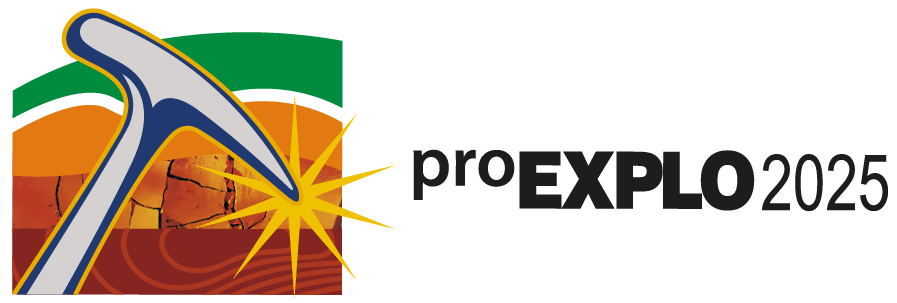- August 8, 2024
Peru's vast mining potential and presence of skarn deposits and CRDs
Specialists informed about the progress of exploration in Peru and the cases of the Hilarion and Ayawilca projects.

Lima, August 8, 2024. The Organizing Committee of the 14th International Congress of Prospectors and Explorers - proEXPLO 2025 held the second seminar Heading to proEXPLO, entitled "Current overview of skarn deposits and CRDs in Peru and around the world".
Skarn Deposits
At the event, Zhaoshan Chang, Professor of Economic Geology at the Colorado School of Mines, gave a presentation on skarn deposits. These are mineral deposits formed with a pattern of paragenesis and zoning. They are the main source of tungsten (W) and tin (Sn), as well as gold (Au), copper (Cu), zinc (Zn), lead (Pb), silver (Ag), molybdenum (Mo) and iron (Fe).
"We see that there are many known skarn systems in Peru. In some, lobes have been found that need to be studied a little more to know other parts of the system and also new systems need to be found. Peru's soil is very fertile, with very good potential," said Chang.
He also explained that both zoning and geometry can generate six different skarn-type deposit sectors. As an example of sector 1, there is Antamina, Ferrobamba, Antapaccay, Magistral; sector 2, Coroccohuayco; sector 3, Cotabamba; Ayawilca is mostly sector 4 to sector 5; Uchucchuaca sector 2 to 6; and Yumpag sector 4 to 6.
Hilarion Project
Juan Taco, Corporate Head of Greenfield Exploration for Nexa Resources, participated in the event to share details on the Hilarion project, a CRD and skarn-type deposit of zinc, lead, gold and copper, located in the Huallanca district (Bolognesi, Ancash), at an altitude between 4,000 and 5,000 meters above sea level.
This project covers 48 mining properties, over 9,000 hectares, and has been explored since 1975. It is owned by Nexa Resources Peru and its construction would represent an investment of US$ 585 million.
"Summing up, we have 90.7 million tons with a grade of 3.79% zinc, 0.5% lead, 0.06% copper and 0.86 ounces per ton of silver. This 90.7 million would be in this sector of the Hilarion project," said Taco.
CRDs
Peter Megaw, Consulting Exploration Geologist, President of IMDEX/Cascabel and co-founder of MAG Silver and Minaurum Gold, gave a presentation on Carbonate Replacement Deposits or CRDs.
"As the name suggests it is hosted in dolomite, they are high temperature epigenetic deposits dominated by sulfides fundamentally related to intrusion. These are polymetallic, copper, zinc, lead, gold; all of these metals are present," said Megaw as a definition of this type of deposit.
He also highlighted that these deposits are sought because of their large size, from 10 to 150 million tons; they are high grade, from 5 to 50 ounces of silver, 3% to 25% zinc, 0.25% copper and some are critical minerals. It has low operating costs and tends to have a minimal environmental footprint because much of what is removed can be replaced.
"Ten years ago, nobody was very interested in these deposits, then a company (South32) came along and paid US$1.32 million for the Taylor Hermosa deposit in Arizona, and it has become the basis for new investments at the international level," he said.
Ayawilca Project
Finally, Luis Giraldo, Exploration Manager of Tinka Resources, unveiled the Ayawilca project, a CRD type deposit with high zinc grades in central Peru. This project is located in Pasco, at more than 4,200 meters above sea level and also has tin and silver reserves. Its construction would represent an investment of US$ 264 million.
"Ayawilca is a carbonate replacement deposit (CRD), hosted in limestones of the Pucará group of Triassic-Jurassic age. The pyrrhotite and tin mantles formed in the early paragenesis event. The zinc bodies occur after and at the edges of the pyrrhotite bodies," Giraldo detailed.
He also stated that the mineralization is controlled by NNW trending structures along the anticline axis of the same direction; that structural and stratigraphic knowledge is key to the discovery of new ore bodies, as well as the use of geophysical tools (magnetometry and gravimetry).
"Tin and silver mineralization brings additional value to the Ayawilca Project. And the Preliminary Economic Assessment (PEA) 2024 summarizes an economic project for a useful production of 21 years," he said.





